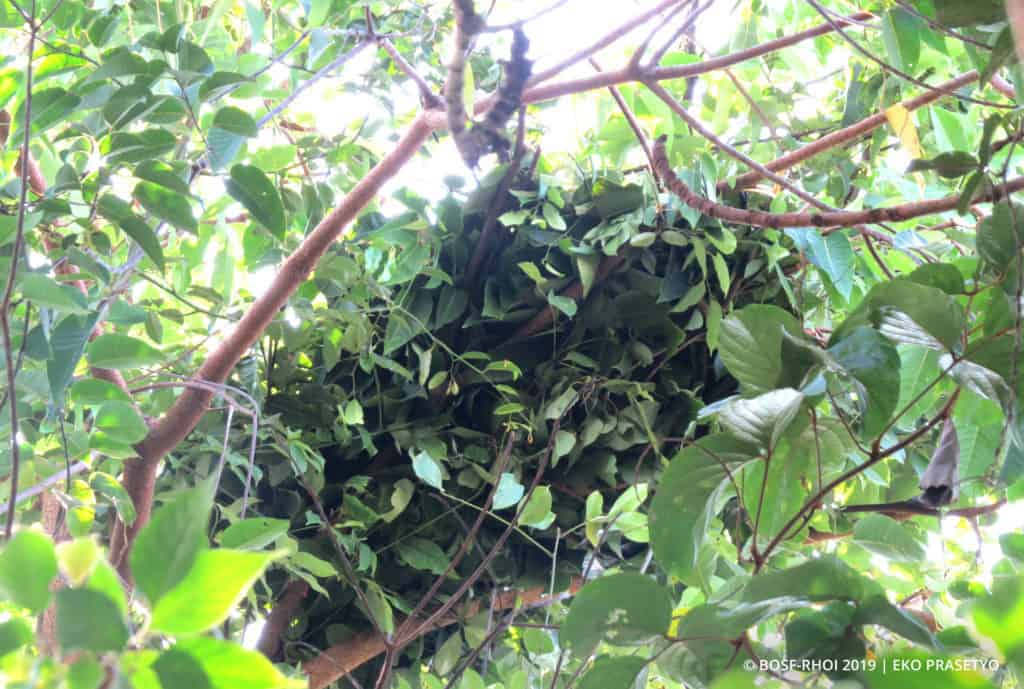The orangutans reintroduced to the wild are tracked by the Post-Release Monitoring (PRM) team on an ongoing basis to ensure that the orangutans are doing well. It’s not, however, easy to find the orangutans in the wild. Their nests, on the other hand, can reveal a lot about their recent activities.
The orangutans, who live in the canopy, rarely leave any footprints. They do, however, leave nests behind. Orangutans actually build a new nest every evening, where they spend the night. The nests give valuable information to the PRM team, which is why they keep track of the nests they find when they’re out patrolling the forest.
Other articles: A mothers’ group gathering
Orangutan observation
The orangutans that are reintroduced to the wild after a long rehabilitation process are always monitored in the rainforest by our partner BOS Foundation’s PRM team. They evaluate how the orangutans adapt to life in the rainforest and ensure that they’ll manage on their own.
In the lush Kehje Sewen forest, the tall trees and the large amount of food are an ideal home for the orangutans, who love to explore their surroundings. And that’s exactly what we want for the orangutans too, while it makes it more difficult for the PRM team to find the orangutans in the rainforest.
The most recently released orangutans are usually the easiest to locate, thanks to the active transmitters implanted behind their shoulders. Although, after a year or more, a transmitter’s battery usually starts to deplete, and the PRM team must resort to other methods in order to track the orangutans.

A mattress of leaves
One of these methods is to track them by the used nests that can be found. What condition the nest is in can reveal when an orangutan last spent the night there. From looking at nests and the condition of their leaf mattresses, the PRM team can learn about orangutan movements. If the leaves in the nest still look green, not withered, then the nest is classified as a ‘Type A’ nest. This type of nest is estimated to have been built less than three days prior.
Nests are consecutively grouped into types B, C, or D, depending on how old they are. Usually, it is possible to estimate the movement of a particular orangutan if the team can find two or more nests of the same type or age, located not too far apart. However, this doesn’t happen very often.
In the wild, orangutans rely on the available materials they can find in the location where they build their nests. The PRM team often find more than one nest in trees that are fruiting, and have learned that some orangutans like to use or repair these leftover nests, especially if the nests are still relatively new.
Above you can see nests categorized as type A, B, C and D, depending on how old the nest is.
It’s not easy locating orangutans
As orangutans are capable of roaming far and wide in a short amount of time, The PRM team still needs to patrol the area for several days after finding a nest, and often still won’t be able to locate the orangutan.
Recently, the PRM team found several nests in one day but failed to find any orangutans. The fact that the nests that were found could be classified as Type A nests assured the team that the orangutans roaming in that area were in good health and actively exploring.
Just as it should be.




